A REUNION on Zoom with a dozen former colleagues was the highlight of a surprise celebration for 94-year-old Dr Eric Robinson, for over 50 years a major figure in British geology, when colleagues and friends gathered in Watchet’s East Quay arts centre to celebrate his achievements over a long and eventful life.
Eric, and his late wife Isabel, moved to Watchet in 2001 where Eric became a popular figure and was soon involved in local geology, continuing his pioneering work in studying the stones used as building materials.
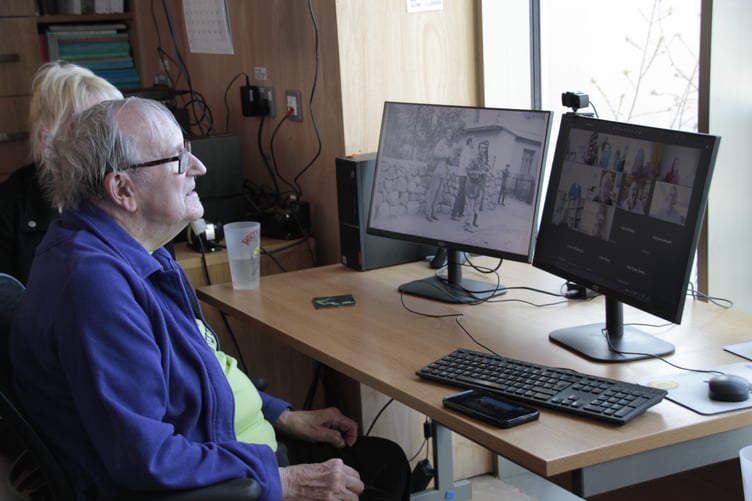
+ 2
(View All)
Eric talks online to friends and former colleagues via Zoom. PHOTO: George Ody.
It was after he recently moved from his Watchet riverside farmhouse to a retirement home in Alcombe that his daughter, Helen Chave, decided to organise a surprise tribute to her father’s lifetime contribution to geology, inviting former colleagues, friends and representatives from the numerous local organisations he was involved with over the years.
“We just told him we were going for a coffee but only at the last minute could we be sure that he’d agree to get into the car,” Helen said.
“When he got over his surprise he was thrilled and a bit overwhelmed by how many people had turned up and particularly being able to talk on line to colleagues he hadn’t seen for years.
“Ever since he has talked of little else. The day gave him enormous pleasure and has really perked him up. It made him realise how much people appreciate what a big contribution he has made to geology and that he hasn’t been forgotten.”
Helen arranged the secret celebration with Dr Andy King, of Watchet geological consultants Geckoella and Dr Tony Dore, a leading petroleum geologist, who organised links with a dozen of Eric’s former college for a Zoom session in the Geckoella offices. They included Dr Graham Hickman, president of the Geologists’ Association.
Dr King said: “We were delighted to become involved in this tribute to Eric. He has been a real inspiration to many of us and is still involved in geology and remains a major influence.”
Dr King also organised and presented to Eric a commemorative plaque featuring local Watchet fossils.
After the Zoom event, Eric was welcomed by town crier David Milton to a gathering of representatives of local organisations including the Conservation Society, Watchet Arts Group, Watchet Museum and the town council.
There was also a photographic display and slideshow charting Eric’s life and career. Many of the pictures will be added to the “Erichive”, a project being carried out by colleagues to catalogue and preserve his work as a lasting legacy.
A senior lecturer at University College, London, for nearly half a century, and a revered figure in British geology, it was while teaching at UCL in the 1970s that Eric first put forward the then revolutionary idea that geology could be taught not just on field trips but through the stone in buildings and streets.
He said: “Geology has to show how useful it can be to other disciplines - architecture for instance. I gave conservation courses at the Architectural Association which involved handling and analysing pieces of stone.
“One of my AA students is now in charge of the structure of the Palace of Westminster. He’s got his work cut out there!”
By the mid-80s, urban geology - as a way of bringing stones to life - had caught the imagination of both students and the public. Eric was an advisor on numerous TV programmes, was invited to Buckingham Palace and became a consultant at Westminster Abbey to uncover and preserve a 13th century mosaic pavement.
On Eric’s advice, clergy were told to wear felt slippers when near the pavement and military personnel were forbidden to stamp their feet!
His intervention as an expert witness resulted in the rejection of a planning application for controversial buildings including one that Eric claimed would eventually fall onto London’s Royal Free Hospital.
In what was supposed to be semi-retirement in Watchet he organised geological walks, lectures and produced guides and literature. He also designed and helped build a geological wall on Watchet railway station and led beach walks and field trips until his health intervened.
An enthusiastic marathon runner in his younger days Eric still recommends it as a useful research tool. “Running is a good way of finding out what’s happening geologically. You can often tell what’s underneath by the reaction of the ground you’re running over.
“Unfortunately,” says the former president of Highgate Harriers athletic club, “they tell me my running days could well be over!”

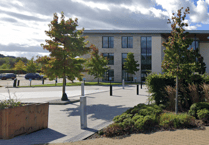
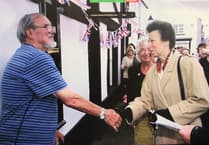
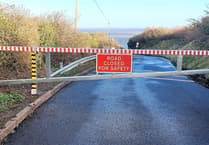
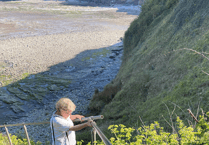
Comments
This article has no comments yet. Be the first to leave a comment.